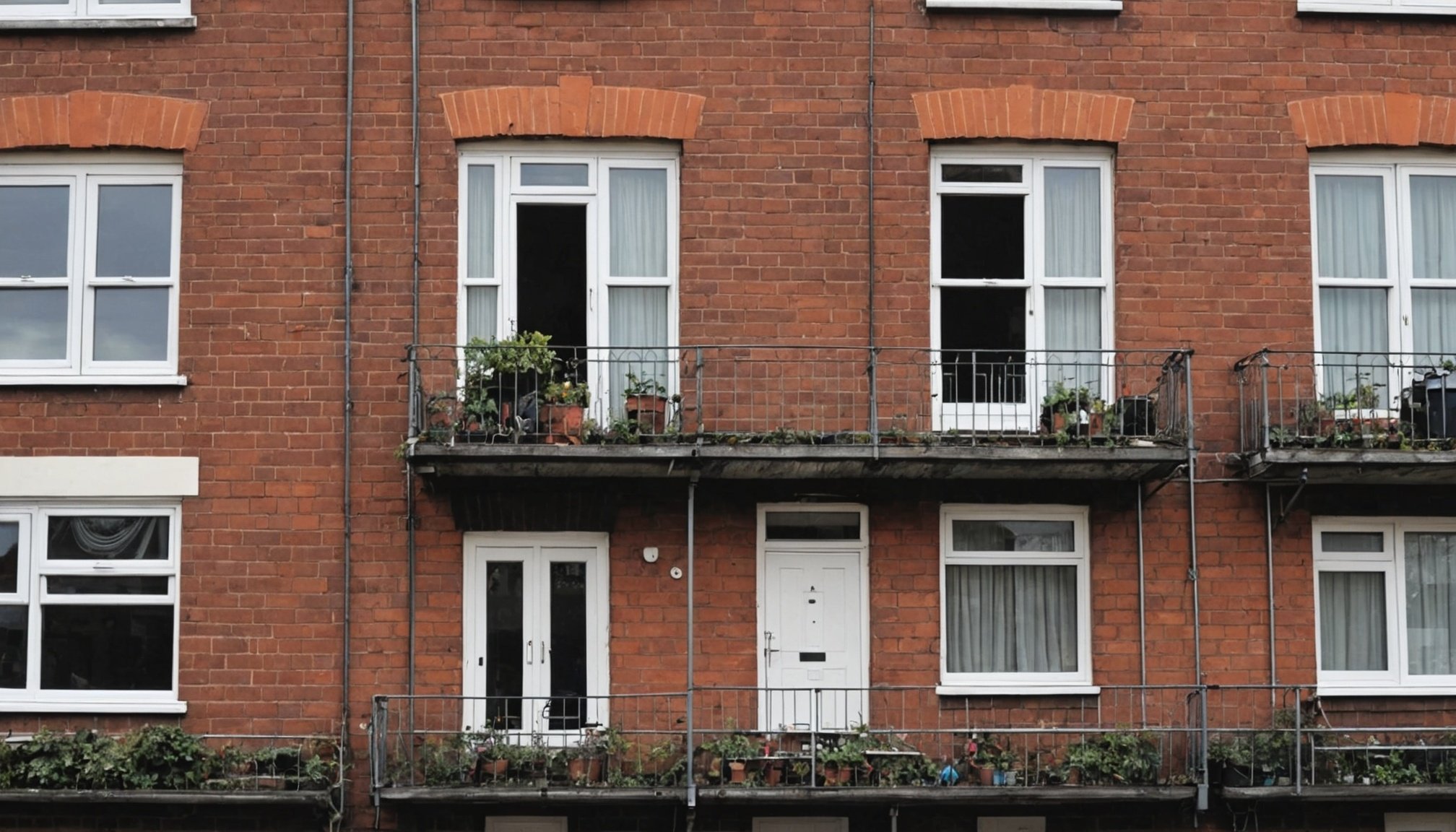Understanding the Importance of Property Maintenance
Proper property maintenance is crucial for housing associations as it significantly affects their reputation and tenant satisfaction. When properties are well-kept, it reflects the responsibility and reliability of the housing association, thus enhancing its image. Tenant satisfaction is largely influenced by the living conditions within the properties, which, if neglected, can lead to tenant dissatisfaction and a declining sense of community wellbeing. Poor property upkeep is not just about aesthetics; it affects the safety and comfort of the residents.
Housing associations also have statutory obligations to uphold property maintenance standards. These responsibilities ensure the health and safety of tenants while promoting long-lasting value of housing stock. Failing to meet these obligations can result in legal consequences, loss of trust from tenants, and deterioration in community morale.
Additional reading : Discover the latest uk rules for importing exotic pets in 2023: a comprehensive guide
Neglecting maintenance can also lead to increased costs over time. Small issues, if left unresolved, may escalate into significant problems, requiring costly repairs. Hence, proactive approaches to neglect resolution are not only cost-effective but also foster healthier communities. Housing associations need to understand these dynamics to maintain their properties effectively and keep their tenants satisfied and secure.
Proven Strategies for Effective Property Maintenance
Successfully managing property maintenance requires implementing robust strategies to uphold housing standards and ensure tenant satisfaction. Effective property maintenance strategies involve proactive measures that minimise risks and potential issues.
This might interest you : Mastering business rate relief: your comprehensive 2023 guide for small uk businesses
Regular Inspection Protocols
Establishing regular inspection protocols is vital in identifying potential problems early. Routine inspections allow housing associations to address issues before they escalate, thus saving time and money in the long run. Utilising advanced tools and technologies, such as drones and thermal imaging cameras, can significantly enhance the efficiency of these assessments. Moreover, creating a standardized inspection checklist ensures all areas are consistently evaluated, providing a comprehensive overview of the property’s condition.
Preventive Maintenance Techniques
Implementing preventive maintenance techniques is instrumental in avoiding expensive, reactive repairs. Prioritising areas like plumbing and electrical systems, often prone to wear and tear, can mitigate the likelihood of breakdowns. A notable case study highlights a housing association that significantly reduced repair emergencies by focusing on preventive actions, leading to improved tenant satisfaction and lower maintenance costs.
Resource Allocation and Budget Management
Strategic resource allocation and budgeting are crucial for effective property upkeep. Balancing urgent repairs with preventive measures ensures housing associations can address immediate needs while investing in long-term property health. Utilising dedicated budget management tools can provide insights into maintenance expenditure, allowing for more informed financial decisions.
Community Engagement and Tenant Communication
Community engagement and effective tenant engagement are paramount in fostering a healthy living environment. Involving tenants in maintenance discussions establishes transparency and strengthens trust between tenants and property management. By actively participating in these dialogues, tenants feel invested in the community’s wellbeing, leading to increased satisfaction.
Effective property management communication is essential to convey maintenance plans and address concerns promptly. Providing clear, concise updates on maintenance schedules and upcoming projects can alleviate tenant anxiety. Utilising multiple channels such as emails, newsletters and digital notice boards ensures that information reaches all tenants, catering to different preferences.
Organising community meetings serves as a collaborative space for problem-solving and feedback. These gatherings promote open dialogue, where tenants can voice their concerns and suggest improvements. It is a proactive approach that can lead to innovative solutions, tailored to the community’s specific needs.
Housing associations can utilise these communication strategies to build a sense of community ownership. Engaging tenants not only optimises property maintenance outcomes but also strengthens the communal bonds, resulting in a more cohesive and satisfied tenant community.
Regulatory Compliance and Best Practices
Adhering to housing regulations is essential for housing associations to ensure safe and satisfactory living conditions. Understanding legal responsibilities is paramount. Key regulations often revolve around tenant safety, structural integrity, and environmentally sustainable practices. Complying with these regulations not only safeguards tenants but also enhances the association’s credibility. However, common compliance pitfalls, such as outdated documentation or insufficient safety checks, can pose significant risks. Avoiding these by regularly updating procedures and documentation is crucial for maintaining compliance.
Engaging with Local Authorities
Collaboration with local government can further bolster compliance strategies. Many local authorities provide resources and support for maintenance initiatives. By engaging with these bodies, housing associations can access valuable insights and practical assistance. Case studies reveal that successful collaborations have led to improved maintenance outcomes and happier tenants. For instance, partnerships may involve workshops on best practices or joint ventures in maintenance projects. Such initiatives facilitate better resource allocation and innovative solutions tailored to community needs.
Implementing compliance strategies and engaging proactively with local authorities are best practices that ensure adherence to regulations. Ultimately, these efforts promote not only the health and safety of tenants but also the reputation and longevity of housing associations.
Measuring Success in Property Maintenance
Evaluating success in property maintenance is essential for housing associations to ensure tenant satisfaction and maintain high standards. Key performance indicators (KPIs) like response time to maintenance requests and frequency of emergencies are crucial metrics. These indicators provide insights into efficiency and effectiveness, helping associations to refine their strategies.
Tenant satisfaction serves as another vital measure of success. Gathering and analysing tenant feedback can identify areas needing improvement while highlighting what works well. Methods for collecting feedback include surveys, suggestion boxes, and digital platforms, making it easier for tenants to share their experiences.
To optimise strategies, housing associations should regularly evaluate performance data and adjust practices accordingly. Performance evaluation fosters a culture of continuous improvement, aligning maintenance efforts with tenant needs and expectations.
Utilising advanced tools for analysis, such as software solutions for trend tracking and data visualisation, can enhance understanding of maintenance outcomes. These tools facilitate informed decision-making, enabling associations to allocate resources efficiently.
Incorporating this structured approach to performance evaluation not only boosts maintenance success but also nurtures a positive living environment. The relationship between effective property maintenance and tenant satisfaction underscores the importance of a strategic, data-driven focus in these efforts.
Future Trends in Property Maintenance
In the evolving landscape of property management, understanding the future of property maintenance is pivotal for housing associations. Technological innovations and practices are set to redefine efficiency and eco-friendliness in this sector, heralding a new era of maintenance strategies.
Technological Innovations
Technology plays a transformative role in modern property maintenance. The incorporation of artificial intelligence (AI) and automated systems is streamlining maintenance tasks, which greatly enhances efficiency. For example, AI-powered diagnostic tools can predict wear and tear, allowing proactive interventions. Automated scheduling systems help optimise human resources, ensuring timely maintenance without overburdening staff.
Sustainable Practices
Sustainability is becoming a core component of property management. Housing associations are increasingly adopting eco-friendly materials and processes to minimise environmental impact. Implementing green energy solutions, such as solar panels or energy-efficient appliances, is a testament to this shift. Successful sustainable initiatives not only lower operational costs but also improve tenant satisfaction. A case study of a housing project integrating rainwater harvesting and renewable energy demonstrated reduced utility costs and increased community goodwill.
By embracing technological advancements and sustainable practices, housing associations can ensure their properties remain competitive, resilient, and culturally conscious in the future. These efforts promise enhanced operational efficiency and tenant satisfaction, paving the way for holistic property management.
Case Studies of Successful Transformations
Exploring diverse case studies of housing associations unveils practical insights into effective property management. These examples highlight successful transformations that have paved the way for optimised maintenance and improved tenant experiences.
One noteworthy example is a London-based association that implemented a comprehensive maintenance strategy focusing on both reactive and preventive measures. By leveraging advanced diagnostic tools, they reduced unforeseen plumbing issues by 30% within a year. The association’s proactive stance not only lowered maintenance costs but also significantly boosted tenant satisfaction.
In Manchester, a social housing provider prioritised community involvement in their maintenance approach. Organising regular community workshops where tenants could suggest improvements led to a collaborative environment. This methodology resulted in a 20% increase in tenant engagement and generated innovative, community-tailored maintenance solutions.
Another success story from Glasgow underscores the importance of eco-friendly innovations. Here, adopting sustainable materials and practices, such as solar-powered water heating systems, showcased a commitment to environmental responsibility. This not only reduced utility expenses by 25% but also enhanced the association’s reputation as a green leader in the sector.
These case studies serve as valuable blueprints for other housing associations aspiring to achieve similar transformative successes.





